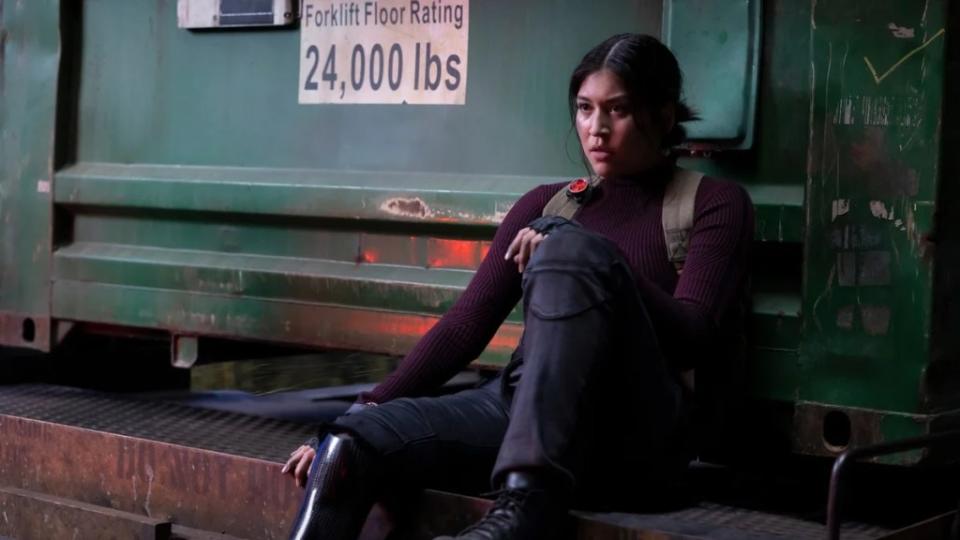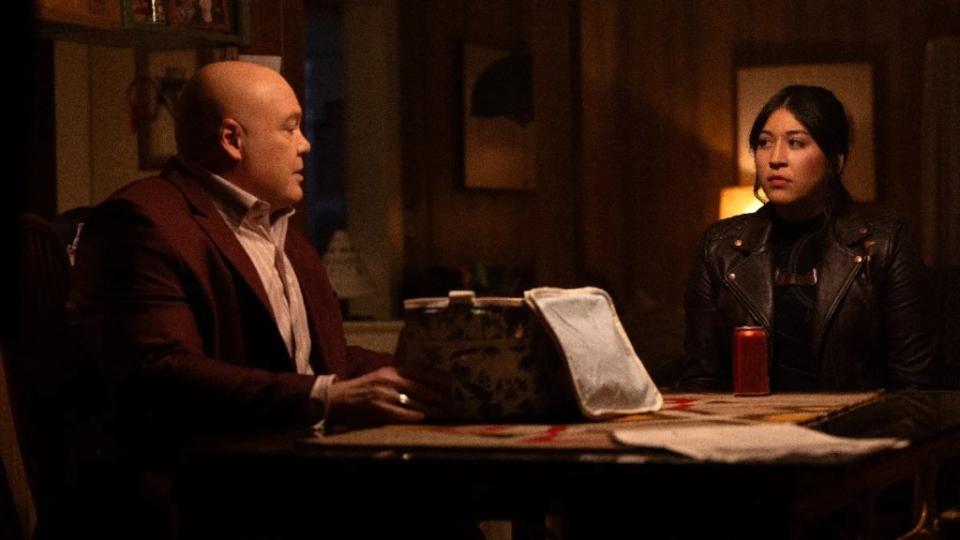The Making of Marvel’s ‘Echo’: How and Why the MCU Returned to a Ground-Level Story
- Oops!Something went wrong.Please try again later.
- Oops!Something went wrong.Please try again later.
Now 16 years into the MCU, you might expect each new project to be even bigger than the last, with cosmic, multiversal implications and mainstay characters popping in everywhere you look. But that’s simply not true of Marvel’s “Echo,” the latest series coming to Disney+ (and this time, Hulu as well).
“Echo,” which in a break from precedent will stream all episodes beginning Tuesday night, centers on Maya Lopez (Alaqua Cox) as she returns to her hometown and a family she left behind years prior. There are no expectations of an Avengers-level threat, and thus, three episodes in, no guessing of which A-list hero might pop in.
It’s simply a story about a Choctaw girl from Oklahoma, and that was something that director Sydney Freeland immediately embraced.
“One of the things that we had working for us is that we weren’t beholden to this, like, fate of the universe, you know?” Freeland explained to TheWrap. “We weren’t dealing with these huge, cosmic consequences, and you know, we weren’t going to space.”
The lack of MCU implications is even being drilled down by Marvel and Disney, which put a new “Marvel Spotlight” logo on the front of each episode of “Echo” that’s designed to tell viewers they don’t need to understand or be caught up on the larger Marvel universe to enjoy “Echo.”
That said, Freeland’s favorite MCU films remain “Guardians of the Galaxy” and “Thor: Ragnarok.” But having a much smaller scale than those films proved pivotal to cracking the story of “Echo.”
“Once we knew what our sandbox was, I was like,’OK, let’s lean into that. And let’s just make this — let’s make our universe the community.’ And so, once we have that, then it was all about leaning into the specifics of the Choctaw cultures, the specifics of the Deaf world to try to put ourselves in the perspective of Maya Lopez.”

Finding those specifics required plenty of time and research. Freeland is quick to point out that, though she is an indigenous director, she is Navajo, not Choctaw, and those two cultures are extremely different. As such, she went to the Choctaw community directly.
Not only did her efforts result in the proper handling of Choctaw stories and culture, but they also steered the actual color palette of “Echo,” as Freeland wanted to avoid making Maya’s hometown “feel like a backwoods, podunk, hillbilly town,” and more like “a world that was already in progress.”
“We really wanted to have this environment in Oklahoma to have these rich sort of colors, kind of primary colors, like blue skies, and red earth, green from the trees, and having this world that was a little bit brighter and poppier than somewhere like New York,” she explained.
“We typically think of New York as bright lights, big city, you know?” Freeland continued. “And in New York, we tried to lean into more rusts and metals and browns to create this juxtaposition that might be unlike what we’re typically associating with city and the country.”
The director also began taking ASL classes along with her department heads, meeting up once a week to learn to sign so they’d be able to properly communicate with their series star, Alaqua Cox.
“I needed to be able to look Alaqua in the eye, and just have some emotional connection. I didn’t want to be going through a translator,” Freeland said. “She was very patient with me.”
She continued, “It’s funny, I imagine it must have been like talking to a kindergartener, from her standpoint. Like, ‘That’s cute, that’s cute, you know your name, that’s great.’ But we were able to have those moments on set where you can look each other in the eye, and feel the mutual emotion and intent of a scene.”
In an unexpected twist for Freeland, the sign language aspect of the show also ended up dictating the actual framing of the shots because, where text and subtext can simply be separated by tone in someone’s speech, it’s conveyed via face and hands in ASL. The camera largely had to stay close up on Cox, and Freeland made sure to keep that consistent across more than just Maya.
“Because that was a close-up for Alaqua, that meant that’s a close-up of everyone else,” she explained. “Doesn’t mean anyone else gets special treatment.”
In figuring out how to make that framing work for “Echo,” Freeland turned to other action projects that shot in a similar way.
“That was like stuff like ‘Mad Max: Fury Road’ — obviously we’re never going to see that level of practical approach,” she explained. “‘Atomic Blonde,’ we looked at ‘John Wick,’ of course — so really looking at these sort of grounded, desert, visceral, visual stories.”
The series brings back Vincent D’Onofrio’s Wilson Fisk, a.k.a. Kingpin, and Charlie Cox’s Daredevil, so yes, Freeland went back to the Netflix series they originated in, as well. The director said she specifically revisited its third season, as it had a “great” storyline for Kingpin.
The two men are inarguably Marvel pillars, but, according to D’Onofrio, his first conversations with Freeland made it clear that “we were doing the Maya Lopez story.”
“When it comes to Alaqua, first of all, she’s deaf. She’s an amputee. She’s indigenous. This is a world that people need to know more about, all three of those things,” D’Onofrio told TheWrap.
And having already worked with the boundary-pushing actress on “Hawkeye,” D’Onofrio was excited to do more with her.
“She’s just very impressive as an actress. ‘Hawkeye’ was the first thing that she really ever did. And she’s just learning like crazy,” D’Onofrio recalled. “And when I was on set with her, I was not nervous about her abilities at all.”

He continued: “We went head to head on a lot of very, very intense scenes with a lot of dialogue, and she definitely holds her own.”
In fact, it was those scenes with Cox that helped D’Onofrio find his latest take on Kingpin. They became an anchor point for him.
“The key thing was that we wanted to be able to show this kind of, I want to use the word ‘normal,’ but obviously it’s not normal, because you’re dealing with assassins and stuff like that,” D’Onofrio said, chuckling. “But the idea was to have this kind of domestic situation, where [it’s] just a relationship between a father and a daughter. And the sense of that, and the sense of how that happens in real life with people, but then put that feeling into our story.”
D’Onofrio was well aware of the actual comic lore between Maya Lopez and Kingpin, so his discussions with Freeland largely centered on how to elevate that emotional link between the two. In the end, the process actually ended up being pretty familiar to the actor.
“It’s the way we approached the Netflix series of ‘Daredevil.’ That’s how we do it,” D’Onofrio said. “There is the whole world of the MCU happening, but we’re telling an on-the-ground, gritty story, emotional story, just like we did in the Netflix series. A very different story, but it has that same tone. It’s a good way to work. I like it.”
“Echo” will release all five episodes on Disney+ and Hulu on Jan. 9.
The post The Making of Marvel’s ‘Echo’: How and Why the MCU Returned to a Ground-Level Story appeared first on TheWrap.

